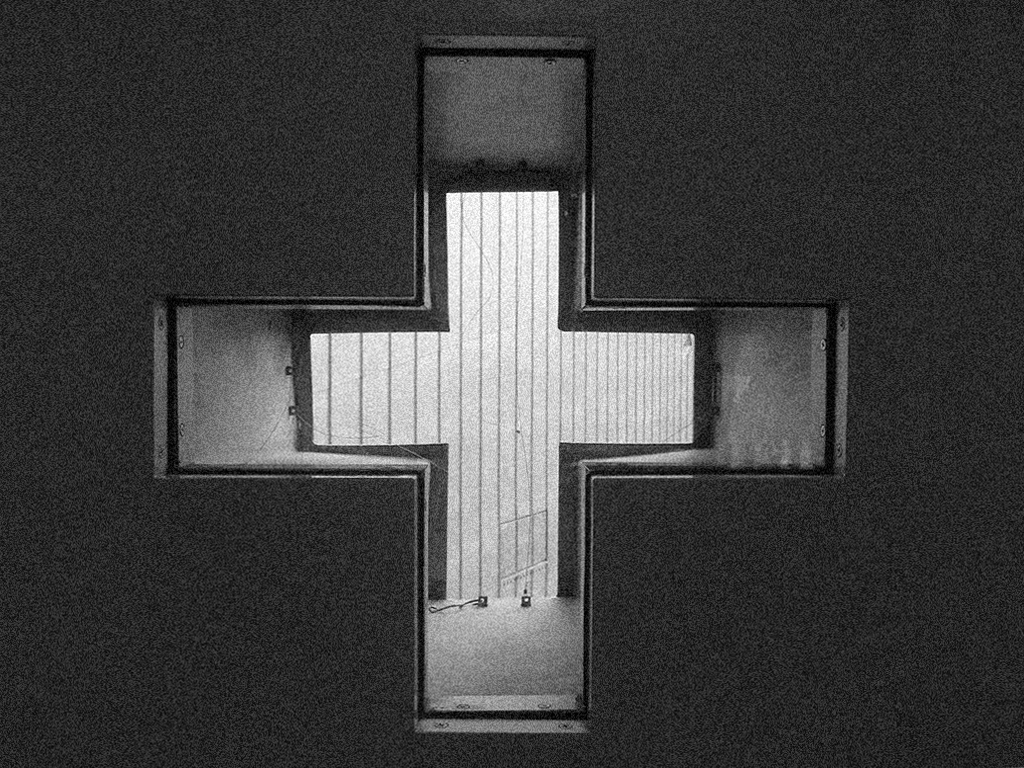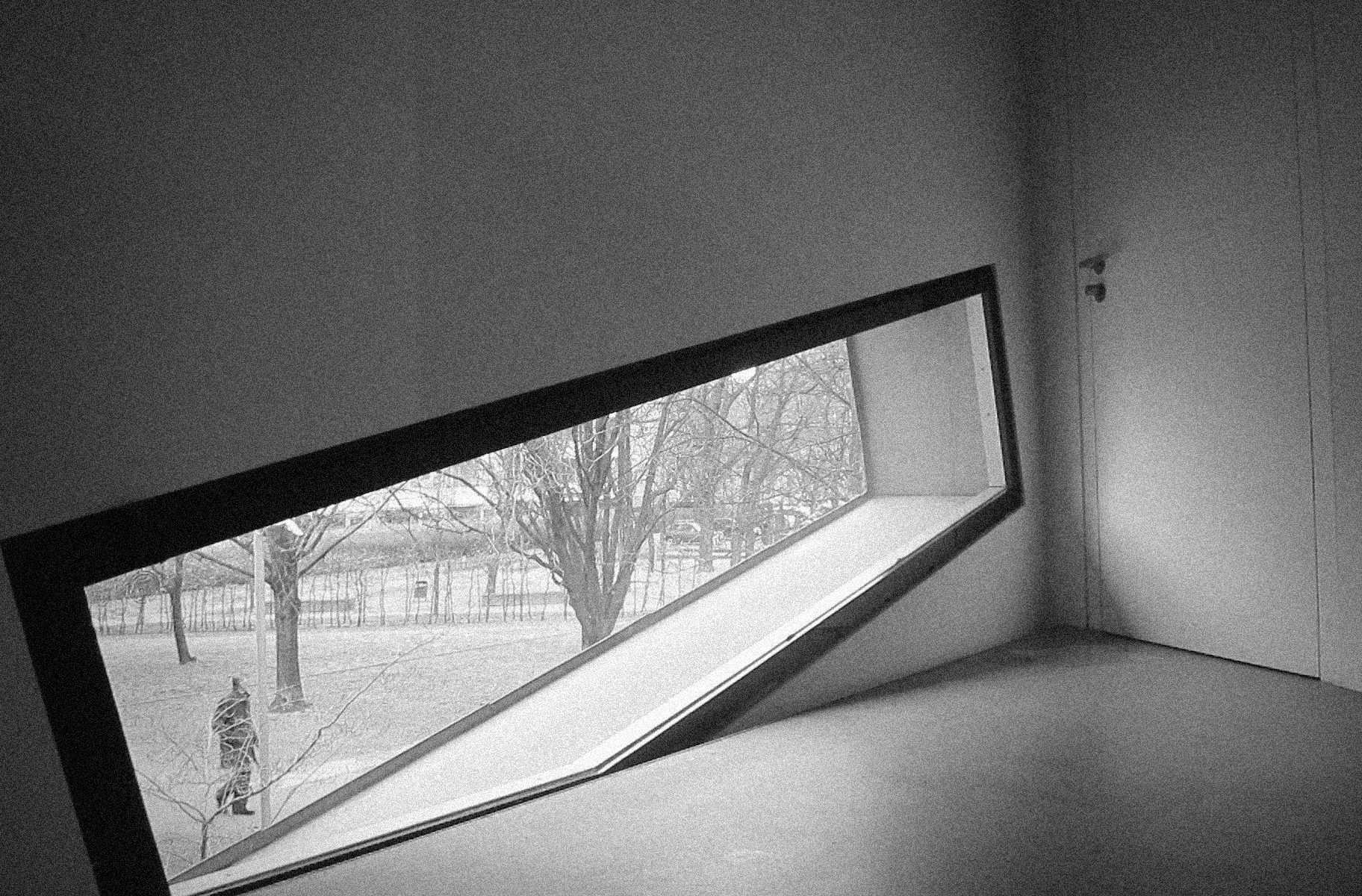My main interest concerns unidentified spaces, thresholds, and the interplay of surrounding elements such as light and texture around these spaces.
What we see relies upon our visual perception that allows us to understand things or spaces by appearance. We are able to relate to the view and to comprehend the reality of the space by how a given space looks and what emotional experiences it might possess.
These spaces that are often secluded and not exposed as the main areas. The unused space is likely to be celebrated or defined by the main space for events.
Subsequently, the intimacy of viewing through frames of doors, windows, and/or openings simultaneously interacts with one another throughout the spaces. Hence, the possibility to connect the spaces of folly to a purpose, in a vast series, or as it is, in vain.
And it is the eye that frames — the window, the door, the vanishing ritual of passage … spaces of movements — corridors, staircases, ramps, passages, threshold— here begins the articulation between the space of the senses and the space of society, the dances and the gestures that combine the representation of spaces and the spaces of representation.
The visual perception of a space dominates how the space looks. However, it is the motion of movement that begins to initiate the senses — the awareness of the situation — that relates to the views that are seen. Sensory and mental images begin to shape the imagination and memory that seem to influence these perceptions.
The recognition of a space comes with the action of looking and seeing what is in the beholder’s gaze. The perceived views are comprehended as the surrounding space or volume informs the senses. The visual encounter is the gateway to a space, with memory and recognition composed into perceptions of the spaces. Thus, how spaces are designed influences the visual perception, the movement, and the experience of the space.
Viewing a space often begins through the threshold of the eye — the visible forms of windows, doors, and barriers can become the tangible boundaries that are unseen but identified through changes of materiality and usage of space.
The threshold, or the beginning of every boundary, is the most anticipated sensation because the expectation has already taken its course. Questions of anticipation and expectations of viewing a particular space create endless debates in perception.
Le Corbusier stressed the importance in his approach of seeing. He said, Everything is in the visual and that the key is to look, observe, see, imagine, then to invent and create.
His work was all about choreographing the viewing moments with every movement within the spaces he designed. To him, ‘the eye is the tool’ of communication in his work. The vision is an important aspect to his creation which has been extensively explored and that was very much displayed through his Architectural Promenade ideology. With that extension of vision, it appears that he achieved more than just the experience of visual perception.

What Space Feels Like
Rene Descartes mentioned that something which he thought he was seeing with his eyes was induced by the faculty of judgment in his own mind. He defines substance as that ‘in which whatever we perceive immediately resides, as in a subject…The immediate subject of particular shapes or motions would seem to be not the whole of matter, but rather delimited parts of it.’
The work of the eye and mind influence the visual perception and to a degree emotion as well as a bodily movement. Visual perception alone is not enough for a person to have a full phenomenal experience — the result of seeing spaces are bound by specific criteria. The visual perception provides an understanding of the space, the influence of the boundaries or threshold, the anticipation that is met and the expectation to follow.
The changes in perception are inevitable due to the possibilities of influential factors of the external context, site and events of spaces and the factors internal to a person such as the memory and sensations of the surrounding. Could this influence the phenomenal experience?
Experience is knowing and gaining something through participating in an event. A phenomenal experience of space is the ultimate awareness one is able to achieve. Yi-Fu Tuan describes the experience as a full coverage of knowing and constructing the reality through direct and passive senses — smell, taste, and touch. The place and objects define the character of the space to bring forth the most intense experiences in addition to emotional factors that overlay the human experience and thoughts. It is necessary to have different modes of experience in order for a person to construct a reality through the sensorimotor, tactile, visual and conceptual. These sensory modes are the sensations responsible for describing how a space feels.
Maurice Merleau-Ponty described sensation as a unit of experience. Seeing, hearing and sensing are known and accepted as perception and have given the images of objects and matter an omitted colour or sound. Merleau-Ponty stated ‘The visible is what is seized upon the eyes, the sensible is what is seized on by the senses. He stated that the physical body provides insight to perception in order to better understand the world.’ The body is in the state of the pre-objective and not completely objective in a process he calls it ambiguity. The constant movement in between these two states achieves a multi-layered perception.
Steven Holl mentioned that the physical phenomena engaging our ‘outer perception’ and mental perception involves our ‘inner perception’. The inner perception has the intentional existence that is able to pursue an interaction between the mind and emotion. The role of the architectural design is to stimulate both the thought and feeling in an outer context primarily adapted to the site. Interaction and relationships occur between the occupant and the objects surroundings. This relationship could be considered ‘immaterial or invisible’ and perhaps exist on the boundaries of architecture. An understanding of the immaterial and the phenomenal experience can initiate or assist in the creation of atmosphere and space that stimulate emotions.
Within certain limitations the sense of space forms part of the visual perception. We absorb the matter we view and we see what the mind wants to acknowledge in any given circumstance. We compartmentalise the images viewed with our eye to heighten sensory perception that is most receptive to its surrounding environment. This would also be in line with Steven Holl’s statement, ‘The art of seeing brings a certain joy in engaging the revealing of the world. Yet it remains in our ‘perspective’ from which we form our own.’
Holl describes phenomenal architecture as a complete perception of ‘The passage of time, light, shadow and transparency; colour phenomena, texture, material and detail all participate in the complete experience of architecture. While the emotional power of cinema is indisputable, only architecture can simultaneously awaken all the senses — all the complexities of perception.’ That combination evidently includes the elements of the foreground, middle ground, distant view, scale and proportion as well as the qualities of material and light.

A complete perception is achievable with the intention of seeing spaces and allowing any responses to the visual perception that partially or wholly creates a spatial experience and performance.


You must be logged in to post a comment.